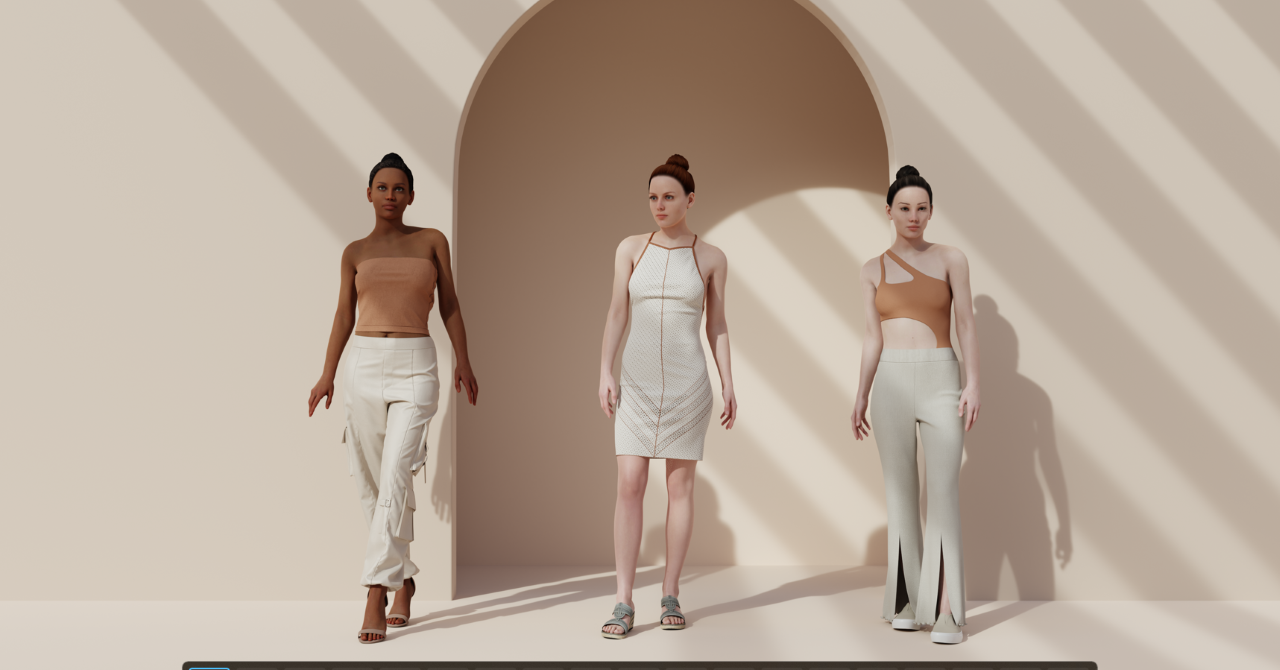
Browzwear says the latest release, version 2022.1, includes software integrations supporting faster creation of photo-realistic visualisations as well as features proving greater assurance that fabric representations in 3D share the physics of those in real life.
With the confidence that 3D garments are true digital twins of physical items, brands and manufacturers can leverage them at every step from concept to commerce, eliminating waste, reducing errors and speeding time to market, it adds.
Real-time photorealistic visualisations in hyper-speed
The latest software release adds the power of real-time, true-to-life rendering via integration with Unreal Engine (UE), Epic Games’ 3D computer graphics game engine. As the new standard for rendering in VStitcher, the technology driving photorealistic experiences in popular games such as Fortnite, will automatically generate visualisations on par with cinematic CGI in the 3D window as the garment is being created.
By incorporating UE, Browzwear says it will considerably accelerate the process of creating even more realistic visualisations, and, at the same time, reduce the amount of computing power required. With the increased clarity of garment details and the addition of accurate shadows on still images, turntables and animations, the 3D visualisations will serve as accurate digital twins suitable for showcasing and merchandising, opening new opportunities for fashion businesses to operate more efficiently and sustainably using 3D.
True-to-life fabric physics
Also included in version 2022.1 is a new system of watermarking that clarifies to users which digital fabrics are sure to share the physical properties of their real-world counterparts as verified by testing using the company’s Fabric Analyzer (FAB) technology. This technology translates a textile’s unique properties into digital form, ensuring draping and movement in 3D will be exactly the same as in real life. By verifying which digital fabrics have undergone this process through a visual watermark, Browzwear is giving customers additional assurance that 3D visualisations are true digital twins of the physical items produced.
More accurate, adjustable fabric transparency
The new edition offers designers more control over the transparency of fabrics visualised in 3D, offering new freedom to experiment during product development. Additionally, with the added assurance that 3D visualisations are accurate representations of the garments that will be produced, fashion merchandisers can confidently, quickly make purchasing decisions without the need for physical samples.

US Tariffs are shifting - will you react or anticipate?
Don’t let policy changes catch you off guard. Stay proactive with real-time data and expert analysis.
By GlobalData”As 3D technology plays an increasingly important role in the movement toward a more sustainable fashion industry, the level of confidence that brands, manufacturers and other stakeholders have in the accuracy of visualisation is of growing importance,” said Hanan Lifshitz, VP of products, Browzwear. “The addition of FAB watermarks and Unreal Engine are just two of the many ways we are helping to reduce the industry’s environmental impact while also supporting better business practices that drive impact for the world overall.”
Last month, Browzwear partnered with The Lycra Company to provide designers using the 3D platforms VStitcher and Lotta with the ability to quickly and easily develop products incorporating fabrics containing Lycra, Lycra T400, and Coolmax fibres.



